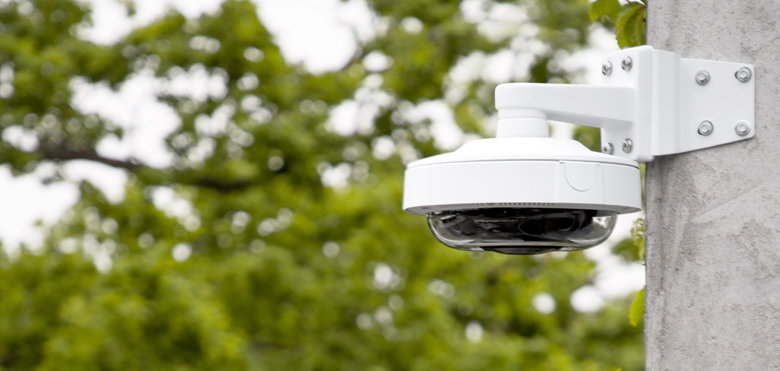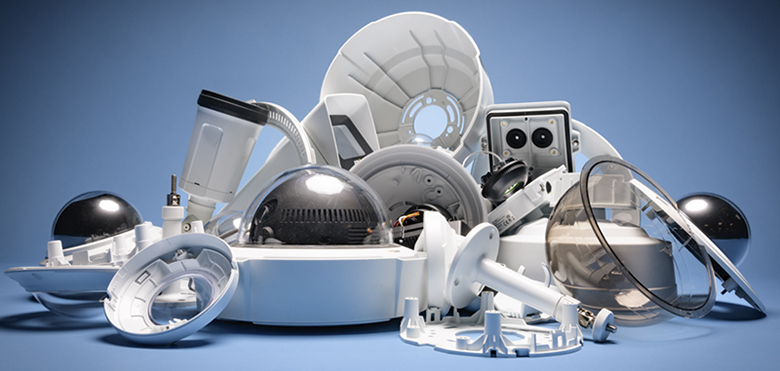Environmentally friendly surveillance: This is what you should think about
The growing environmental awareness and the demand for a more sustainable future are a force that few companies can afford to neglect. This blog post helps eco-minded companies make more sustainable choices for their surveillance systems.
As we all know, sustainability and caring for the environment are increasingly getting essential across most industries. The security industry is no exception to the rule. The vast majority of companies that purchase new, or update their existing surveillance systems, have the best intentions. But it can still be tricky to know which solution is most environmentally friendly.
I recently discussed this with Per Björkdahl, Sustainable Sales Engagements Director at Axis. We asked ourselves, “How can we help customers make more informed choices? What should they ask their vendor or partner when they are planning to invest in their surveillance system?”
In this blog post, I will try to make things more transparent and provide some helpful advice.
No common standard, scoring, or labeling
Despite the general push towards more sustainable business models and greater transparency, the security industry has been somewhat slow to catch on. One reason for this – or maybe its effect – is that there is no shared scoring, labeling, or standard in the industry to verify how sustainable surveillance products or systems are.
Trying to help, we have identified three crucial areas that will give you an idea of the products’ environmental impact and how they align with your company’s ambitions. It is always a good starting point to ask your vendor or partner about them before investing:
- energy consumption
- hazardous substances and materials
- a lifecycle perspective
Let’s dig a bit deeper into each and one of them.
Taking sustainability seriously
You need to ask two main questions about your surveillance system’s energy consumption: how much energy does the system need? Can it be reduced?
Surveillance indeed makes up a minor part of a building’s total energy consumption, but that doesn’t mean that it is unimportant. In the end, it is about your company’s credibility, taking your sustainability goals seriously. And, as Per pointed out, a saved percentage is always a percentage saved.
Serious manufacturers will provide product declarations and documentation that specify sustainable energy consumption factors, which helps compare products.
Analyses have shown that the cameras consume the most energy in a surveillance system, around 60 to 80 percent over the product’s life cycle. Most of the consumption occurs during the product usage phase.
Reducing energy consumption
However, there are ways to reduce this consumption. For example, you can use light-optimizing technology to reproduce sharp color images and superior forensic detail even when it is almost entirely dark.
In practice, it means that you don’t need to light up large areas, using white or IR light, to achieve the safety and security that you are aiming for. For example, using this kind of technology, a school district managed to, maybe counter-intuitively, actually lower the crime rate when they introduced a campus blackout policy to save energy. The electricity savings across the various schools were significant and added up to considerable savings of taxpayer money.
Sustainable storage
Another way to reduce the overall energy consumption of a surveillance system is to take a closer look at the handling and storage of recordings. This is an essential point since data storage and data centers are huge energy consumers.
By reducing your recorded video’s so-called bit rate, less information needs to be transferred and stored. When you use efficient video compression technology, you can lower bandwidth and realistically reduce the required server storage space by 50 percent. In some cases, by as much as 90 percent. This will have a very positive effect on your sustainability as well as provide substantial cost savings.
Seen in a lifecycle perspective, you save both on operation and production. You will need less hardware, so you might argue that your energy savings also includes the production of that extra surplus hardware.
Use of hazardous or questionable materials
To be environmentally friendly, the products in a surveillance system shouldn’t contain any hazardous raw materials or substances that may harm humans or the environment. These materials include, for example, PVC (polyvinyl chloride) or potentially toxic and carcinogenic BFRs/CFRs (brominated and chlorinated flame retardants).
Today, many manufacturers are adopting a green, more sustainable approach to their R&D and product design. It is a big step towards phasing out hazardous or ecologically questionable materials and turning to more sustainable alternatives. For example, using recycled materials helps conserve natural resources, which lessens the environmental impact.
Apart from the environmental and health issues, the sourcing of sustainable raw materials must also safeguard that only conflict-free minerals are used. Minerals, such as gold, tin, and tungsten, must not be mined in conflict areas where sales may prolong armed conflicts.
Having a lifecycle perspective
A crucial aspect of sustainable design focuses on the product lifecycle and how companies can turn to a circular model. Besides sourcing sustainable raw materials, this raises questions such as how sustainable the manufacturing is and if the products can have a second life? Rather than ending up in a landfill, can they be repaired, reused, or upcycled after the usage phase?
Traditionally, manufacturers have focused on optimal mechanical performance during the usage phase. Today, many businesses are getting more interested in closing the loop to include all product lifecycle phases, from raw material back to raw material. For example, Apple has created disassembly robots to help recover rare earth elements, steel, and tungsten from discarded mobile phones.
Team up with the right partners
So, as you can see, several factors come into play when looking at how environmentally friendly a product or system is. It might seem like a tall order to get on top of all that information, but your partners should be able to help you out. Ask, and if necessary, push manufacturers, distributors, and subcontractors to provide information regarding the three aspects I mention above.
When I talked to Per, I liked something he said about companies deciding to go green and focus on sustainability: “You take the first step because you have to. You take the second step because you want to.”
And based on the many companies that I get in contact with frequently, I know this to be true. In the end, it is not just about the cost. It is also about having a clear conscience and sleeping better at night. With that mindset, every step in the right direction counts.
If you have any questions about how to choose the most environment-friendly network surveillance or generally want to discuss the topic, don’t hesitate to contact your local Axis office.
Getting it right: three essential areas |
|




